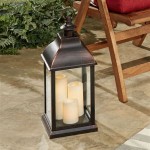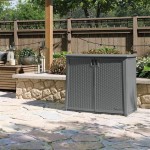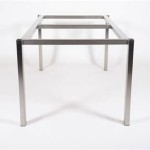Elevating Outdoor Spaces: The Allure of Extra Large Pavers for Patios
Outdoor patios serve as extensions of the home, offering spaces for relaxation, entertainment, and connection with nature. The selection of materials for patio construction significantly impacts the aesthetics, functionality, and longevity of the outdoor area. Extra large pavers are increasingly becoming a popular choice for homeowners seeking to create visually striking and durable patios. These pavers, distinguished by their expansive dimensions, offer a unique combination of aesthetic appeal and practical advantages.
The term "extra large" in the context of pavers typically refers to sizes exceeding the standard dimensions commonly found in residential landscaping. While specific measurements can vary depending on the manufacturer and design, pavers measuring 24x24 inches or larger are generally considered to fall into this category. Some manufacturers even offer pavers as large as 36x36 inches or even larger for expansive commercial applications. The considerable size of these pavers allows for a reduction in the number of joints and seams, resulting in a cleaner, more streamlined appearance.
The selection of extra large pavers is not solely about aesthetics; it involves careful consideration of various factors, including the project's budget, the existing landscape architecture, and the anticipated usage of the patio. The installation process for these pavers can be more demanding than that of smaller, more conventional options, often requiring specialized equipment and experienced contractors. However, the resulting outcome – a visually impressive and long-lasting patio – often justifies the investment.
Aesthetic Advantages and Design Versatility
Extra large pavers possess a distinctive aesthetic appeal that contributes significantly to the overall design of an outdoor space. Their size creates a sense of spaciousness, making even smaller patios feel larger and more open. The reduced number of joints allows for a more uninterrupted surface, showcasing the texture and color of the pavers themselves. This minimalist aesthetic is particularly well-suited to contemporary and modern designs, where clean lines and uncluttered spaces are favored.
The design versatility of extra large pavers extends beyond their visual impact. They are available in a wide range of materials, colors, and textures, allowing homeowners to customize their patios to match their personal preferences and the architectural style of their homes. Natural stone options, such as bluestone, travertine, and granite, offer a timeless elegance and inherent variation in color and pattern. Concrete pavers, on the other hand, can be manufactured in a wider range of colors and textures, including those that mimic the look of natural stone.
Furthermore, the size of extra large pavers allows for creative design possibilities. They can be arranged in various patterns, such as linear, staggered, or geometric layouts, to create visual interest and define different zones within the patio space. Combining different sizes and colors of pavers can further enhance the aesthetic appeal and create a unique and personalized design. The larger surface area also minimizes the visual impact of joint lines, creating a smoother and more cohesive look.
Beyond the traditional patio application, extra large pavers can be used to create pathways, stepping stones, and even pool decks. Their size and inherent stability make them a safe and durable choice for these applications, while their aesthetic appeal enhances the overall landscape design. The ability to seamlessly integrate these pavers into various elements of the outdoor space creates a cohesive and harmonious design.
Durability and Reduced Maintenance
The durability of extra large pavers is a key factor contributing to their long-term value. These pavers are typically manufactured to withstand heavy loads, extreme weather conditions, and the wear and tear of daily use. The materials used in their construction, such as concrete and natural stone, are inherently strong and resistant to cracking, chipping, and fading. This durability ensures that the patio will maintain its appearance and structural integrity for many years to come.
The reduced number of joints associated with extra large pavers also contributes to their durability. Joints are often the weakest points in a paved surface, as they are susceptible to weed growth, erosion, and the infiltration of water. By minimizing the number of joints, extra large pavers reduce the potential for these issues, leading to a more stable and long-lasting patio surface.
The ease of maintenance is another significant advantage of extra large pavers. Their smooth, uninterrupted surface makes them easy to clean and maintain. Regular sweeping or hosing down is typically sufficient to remove dirt and debris. For more stubborn stains, a mild detergent and a scrub brush can be used. The reduced number of joints also simplifies the cleaning process, as there are fewer crevices for dirt and weeds to accumulate.
Furthermore, the use of sealants can further enhance the durability and ease of maintenance of extra large pavers. Sealants provide a protective layer that repels water, oil, and other stains, preventing them from penetrating the surface of the pavers. They also help to prevent fading and discoloration caused by exposure to sunlight. Applying a sealant every few years can significantly extend the life of the patio and keep it looking its best.
Installation Considerations and Best Practices
The installation of extra large pavers requires careful planning and execution to ensure a stable and long-lasting patio. Due to their size and weight, these pavers are more difficult to handle and install than smaller pavers. It is generally recommended to hire experienced contractors who have the necessary equipment and expertise to handle the installation process.
The first step in the installation process is to prepare the base. This involves excavating the site to the appropriate depth and compacting the soil to create a stable foundation. A layer of gravel is then spread and compacted to provide drainage and prevent the pavers from settling. A layer of sand is then used to create a level surface for the pavers to be laid on.
The pavers should be laid in the desired pattern, ensuring that they are level and properly spaced. A rubber mallet can be used to gently tap the pavers into place. Once the pavers are laid, the joints should be filled with sand or a polymeric sand. Polymeric sand is a specialized type of sand that hardens when it is wetted, creating a more stable and weed-resistant joint.
Proper drainage is essential to prevent water from accumulating on the patio surface and causing damage. The patio should be sloped slightly away from the house to allow water to drain away. Drainage channels or catch basins can also be incorporated into the design to collect and divert water. It is important to consult with a landscape architect or contractor to ensure that the patio is properly drained.
When cutting extra large pavers, it is important to use the appropriate tools and techniques. A wet saw with a diamond blade is typically recommended for cutting pavers. This will ensure a clean and precise cut without damaging the pavers. Safety glasses and hearing protection should be worn when cutting pavers.
Finally, it is important to consider the weight of the pavers when designing the patio. Extra large pavers can be quite heavy, and the underlying soil may not be able to support the weight. In some cases, it may be necessary to reinforce the soil or install a concrete slab to provide a stable base for the pavers. Consulting with a structural engineer or geotechnical engineer can help to determine the appropriate support system for the patio.

Extra Large Pavers Cement Slabs With 1 Inch Black Stones 4 Oblong Backyard Landscaping Pebble Patio

How To Design With Large Concrete Pavers Peacock

Poured Concrete Pavers Create A Stylish Patio The Home

Modern Hardscaping Design Ideas Techo Bloc

How To Design With Large Concrete Pavers Peacock

2024 Hardscaping Trend Alert Large Format Pavers Genest Concrete

Poured Concrete Pavers Create A Stylish Patio The Home

440 Sq Ft Large Rectangular Paver Patio Design With Seating Wall And Fire Pit

5 Modern Options For Concrete Pavers

Ibai Paver Large Concrete Slab Smartstone








